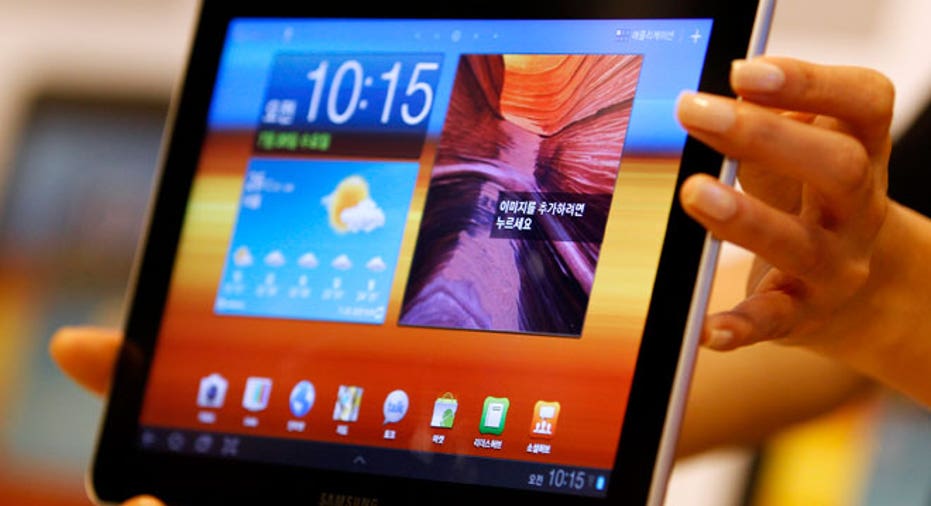Tablet Wars: More Makers Join Search for Pricing Sweet Spot

The iPad starts at $499. While most every device maker has mimicked Apple's price point, none have been able to mimic Apple's sales. At last count, Apple had sold 28.7 million iPads, making the iPad the clear industry leader. Now competitors in the space are realizing that in order to keep pace with Apple, they'll need to lower their prices. Significantly.
Keep up with the latest in technology with the FOX Business Tech Facebook page.
No company is better evidence of this trend than HP, which, after lowering the price of its TouchPad tablet by 80%, to $99, instantly saw sales figures rocketing. (Analysts estimate the now-discontinued TouchPad could soon be the second best-selling tablet behind the iPad, and HP has since decided to extend manufacturing of the TouchPad through the end of October.) Other iPad competitors must follow suit and understand that while $99 is on the extreme low end, there is no way they can ever compete with Apple on retail shelves with the same price tags hanging from their devices.
"There is only one credible player and category leader--and that is Apple's iPad," Trip Chowdhry, an analyst Global Equities Research who specializes in the tablet space, told Fast Company recently. "We don't see any second player at all--only leftovers."
Indeed, Chowdhry estimates that of the millions of tablets that have been shipped from companies such as Samsung, Acer, BlackBerry, and Motorola, only about 10% to 15% of them have actually been sold--a paltry sum compared to the iPad. For example, before dropping its price to $99, HP had reportedly only sold roughly 25,000 units at Best Buy. Another recent report suggests Samsung has sold only about 20,000 of its Galaxy Tab devices. A Toshiba spokesperson pitching a story involving "Thrive's success" in the tablet market declined to provide any actual evidence or numbers behind the claims of success.
The only answer to dismal sales has been to lower prices. In addition to HP, which dropped its price from $499 to $399 before initiating its last-ditch sales effort, Motorola slashed the price of the Xoom tablet significantly, and BlackBerry recently cut the PlayBook's price by $150. Other tablet makers are heading in a similar direction, and delivering devices that are less expensive. Lenovo will soon unveil a 7-inch IdeaPad for $199, while Gateway is set to introduce a Honeycomb slate for $399.
The industry's great hope is Amazon, which is said to be working on a set of tablets in the range of $250 to $300. Forrester Research analyst Sarah Rotman Epps, who estimates that Amazon could sell anywhere from 3 to 5 million tablets in their first quarter on the market alone, has indicated that such a price range could be a sweet spot for tablet competitors, allowing them to differentiate their products from the iPad enough by price to make up for any sacrifice in quality.
With that diverse offering, the tablet market would now have devices priced at all ends of the spectrum, from the extreme low ($99 TouchPad) to middle ($199 to $300 tablets from Lenovo or Amazon) to the competitively priced ($399 to $499 tablets from companies such as Samsung and BlackBerry) to the extreme high (e.g. HTC's $700 Jetstream tablet).
How consumers will respond to this market is uncertain. Would you ever buy a tablet priced competitively with the iPad? What is the true sweet spot that a competitor would have to hit in order to attract your attention: $299? $199? $99? Or would you never purchase a tablet other than the iPad?
This content was originally published on FastCompany.com
 More news from Fast Company: - The Gates Foundation Uses Genetic Modification For Good - Creating Custom-Made Success - How Tumblr Nurtures A Design Culture Without A Design Team
More news from Fast Company: - The Gates Foundation Uses Genetic Modification For Good - Creating Custom-Made Success - How Tumblr Nurtures A Design Culture Without A Design Team